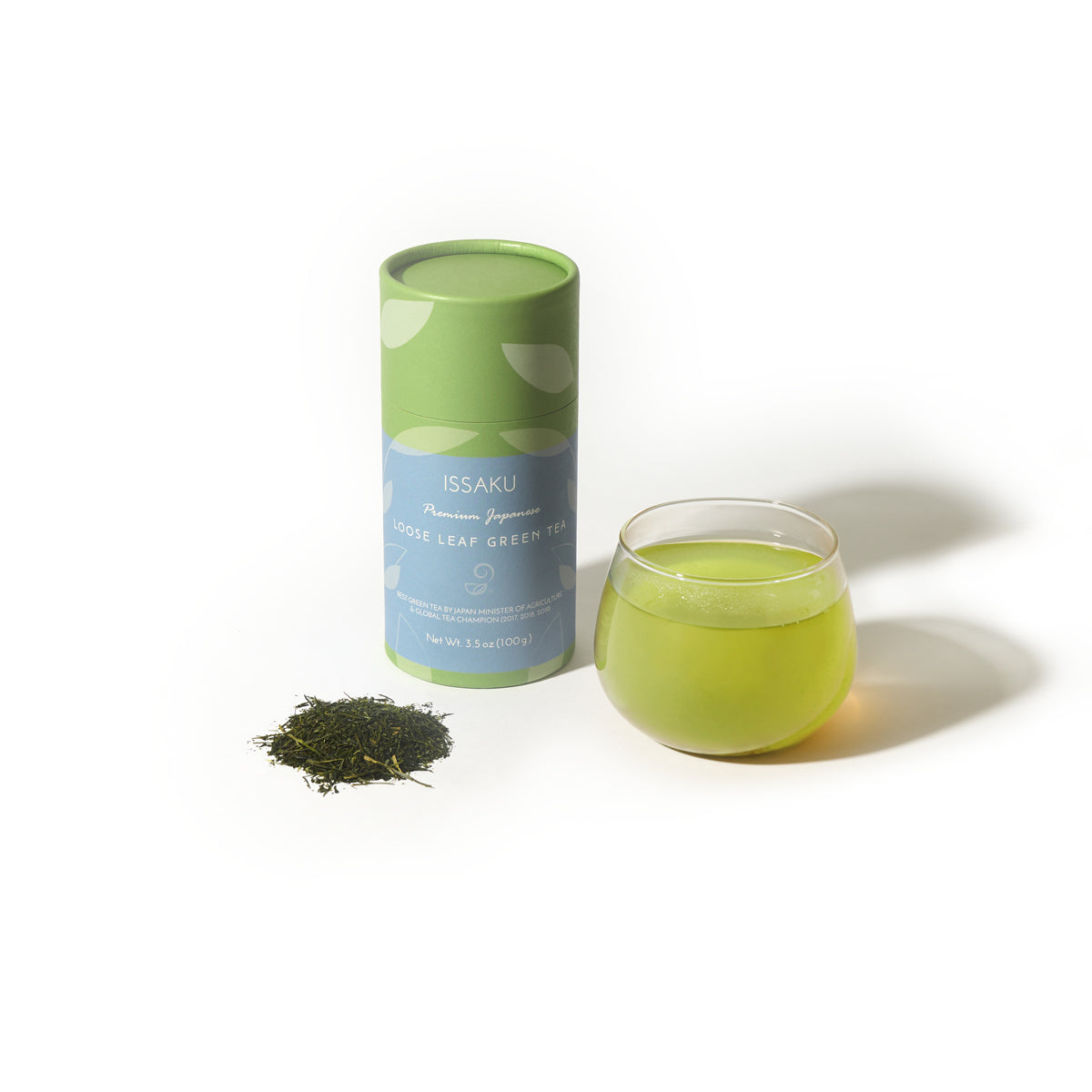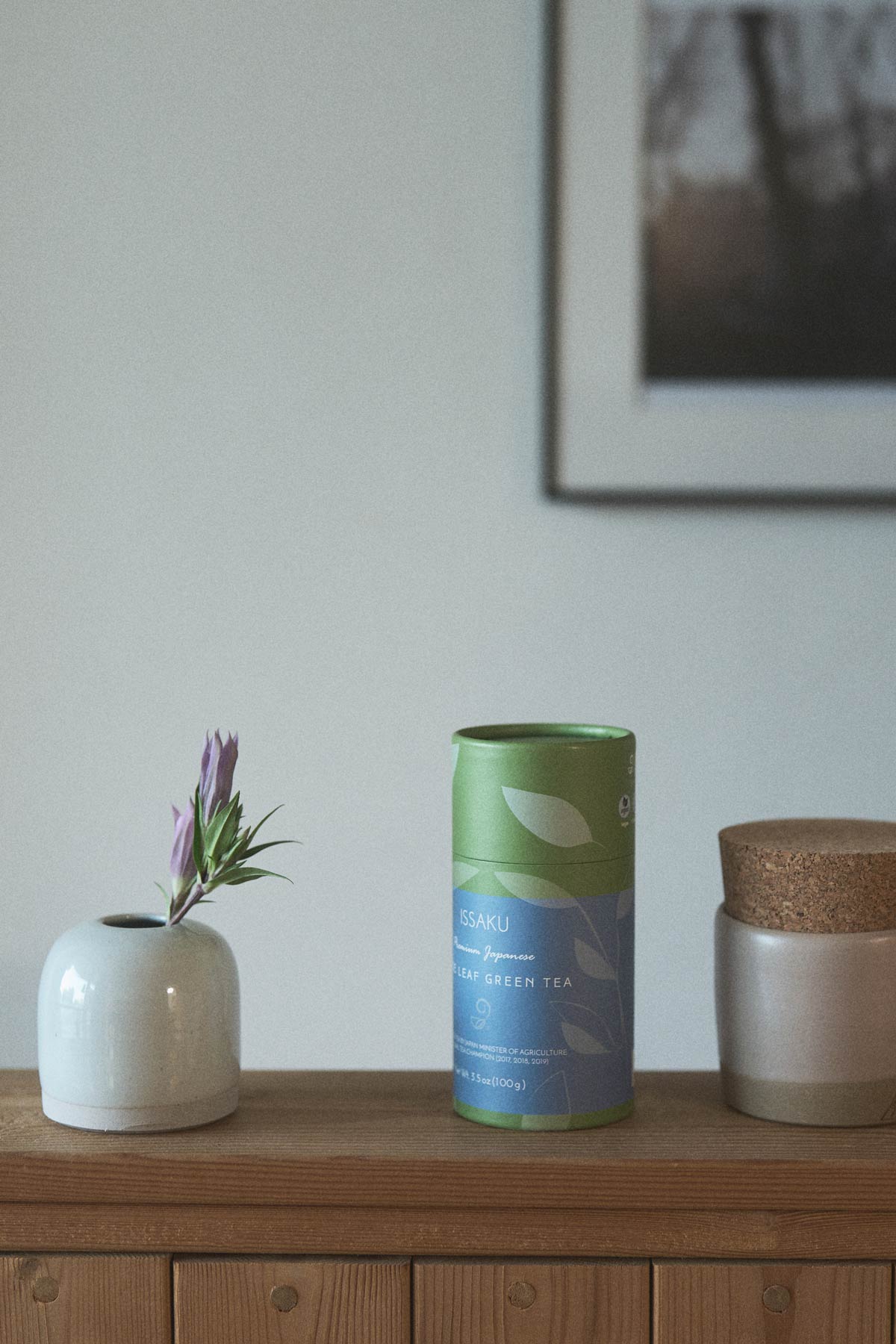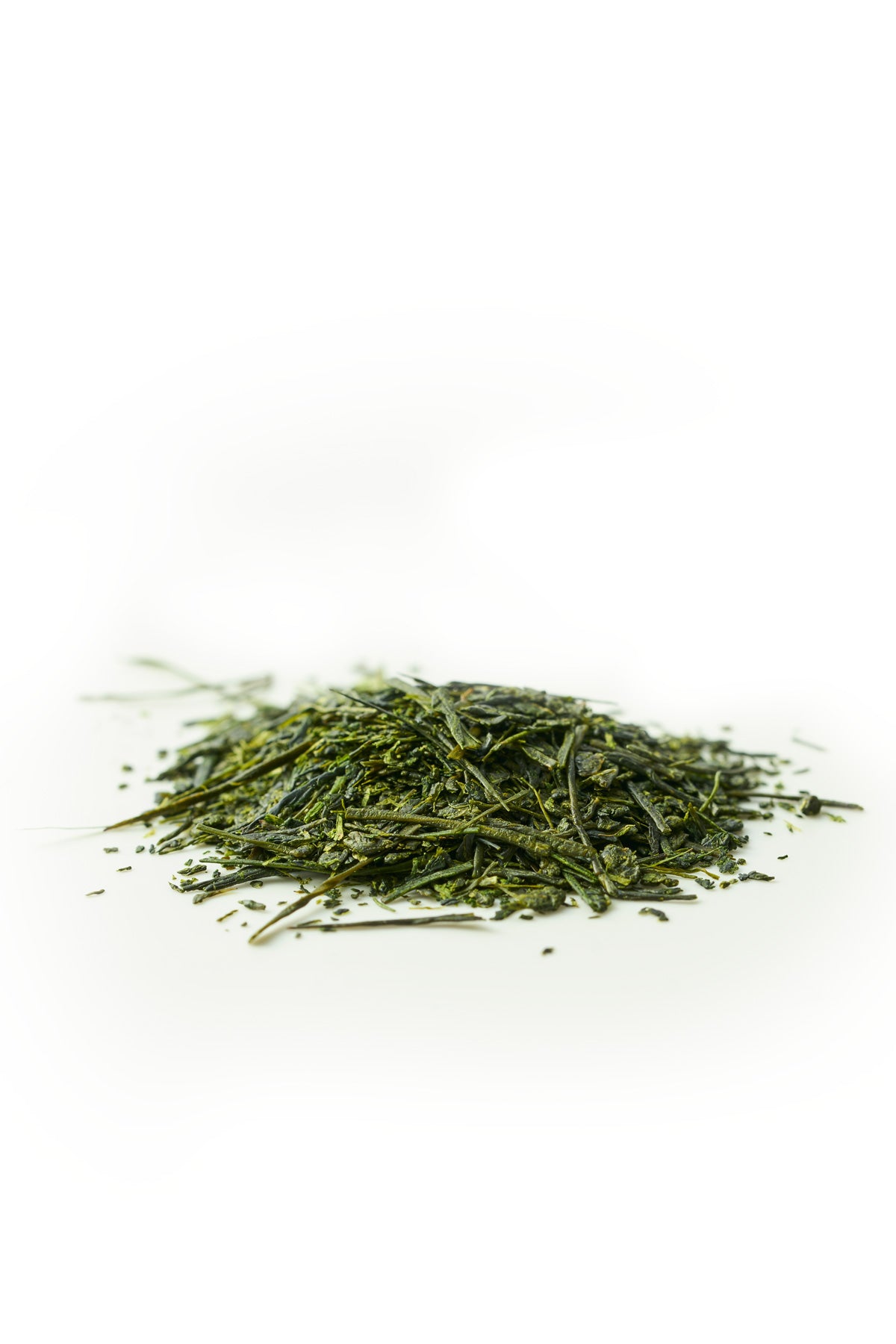Green tea is central to the lives of everyone in Japan. The culture surrounding the harvest and preparation of these tea leaves is complex and deeply rooted in tradition. The green tea harvested in Japan differs in taste and value from the leaves gathered in China and other areas of the world. Here are 10 things about Japanese green tea harvesting you (probably) didn't know.
Across Japan’s tea heartlands—Shizuoka, Uji (Kyoto), and Kagoshima—regional climate and cultivar choice shape flavor in distinct ways. Yabukita remains the workhorse cultivar, while Saemidori and Okumidori are prized for softer sweetness and vivid color. Immediately after picking, leaves are steamed—not pan-fired—at varying depths (asamushi, chūmushi, fukamushi) to halt oxidation and lock in umami. In shaded styles like gyokuro and matcha, kanreisha coverings reduce sunlight before harvest, elevating L-theanine and delivering that signature sweet-savory character unique to Japanese green tea.
1. The First Harvest Yields the Most Desirable and Nutrient-Dense Tea Leaves of the Year.
The first harvest, also called the Shincha harvest, begins in May and lasts several weeks into June. This harvest is known to produce the highest-quality green tea leaves, largely due to the time the plant spends idle during the winter. This slow growth during the cold months causes the leaves to be nutrient-dense, resulting in better flavor. The leaves gathered during the springtime have up to three times the amount of L-theanine as those produced in the later harvests. This accounts for the sweet and mild flavor noticed in the leaves gathered early in the year. (You can get fresh-crop Japanese green tea by clicking here.)
In Japanese tea culture, the first flush is so valued that entire ceremonies and festivals are often centered around its arrival. Shincha is considered a seasonal delicacy, much like the first harvest of rice or fruits. Tea shops and connoisseurs eagerly anticipate its release, with small batches selling out quickly. Beyond flavor, first-harvest leaves also carry symbolic meaning—representing renewal, purity, and the arrival of spring—making them not just a drink, but a cultural experience tied to Japan’s appreciation of nature and seasonality.
2. The Subsequent Harvests Occur Once a Season and Produce More Bitter Leaves.
As established above, the first harvest is held in the highest regard. So what about the rest of the year? Nibancha is the second harvest of the year, taking place in June and July. The summer heat makes the harvest very difficult and taxing on everyone involved. Sanbancha and yonbancha are the third and fourth harvests, respectively. The leaves grow quicker in preparation for these harvests, resulting in lower-quality and less valuable leaves. Despite this, farmers and workers work extremely hard all year to maintain a healthy green tea farm.
In fact, each of these later harvests has its own role in Japan’s tea culture. While the second flush (nibancha) tends to be bolder and more astringent, it is often blended for everyday sencha or used in bottled green tea, which is hugely popular in Japan. The later sanbancha and yonbancha harvests, though less delicate, are still valuable for making tea powders, culinary matcha, or roasted teas like hojicha, which benefits from the stronger, more robust character of these leaves. This ensures that no harvest goes to waste, and each season of growth continues to contribute to Japan’s diverse range of green teas.
3. Kanreisha Curtains are Used to Protect the Plants from Direct Sunlight.
Japan utilizes its own specialized technique for harvesting Gyokuro and Matcha tea leaves. About a month before each harvest, the plants are covered with curtains to limit sun exposure. These curtains, called ‘Kanreisha’, protect the plants from direct sunlight and are known to result in a sweeter flavor. There are two types of curtains used in Japan: direct covering of the plants and a canopy style to block the sun. They are both effective. Shading these green tea sprouts causes them to produce theanine, which is the source of the typical Japanese green tea flavor. This method of production is typically only used in Japan.
What’s fascinating is how precise this shading process can be. Farmers carefully adjust the density of the Kanreisha over time, gradually reducing the sunlight exposure by 50–90% depending on the desired tea profile. The longer the leaves remain shaded, the higher the concentration of chlorophyll and amino acids, which deepen the color and create that signature umami richness in Gyokuro and ceremonial-grade Matcha. This labor-intensive shading technique is one reason shaded teas are among the rarest and most expensive green teas in Japan, reflecting not only flavor but also the artistry of the growers.

4. Each Leaf is Carefully Chosen and Handpicked by Skilled Workers.
Small family operations run most of the farms where the best-quality Japanese green tea leaves are hand-picked during the harvest season. Rows of tea bushes share space with forests and other crops, such as vegetables. Small tea processing plants are associated with these small family operations to sell their harvest, creating slight differences in flavor that Japanese green tea connoisseurs appreciate.
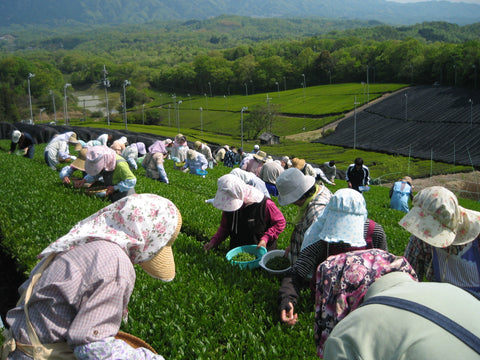
Machine-picked leaves do not result in the same high-quality tea as those that were picked by hand. When hand-picked, sprouts grow from existing forks, giving them a much mellower flavor and a more delicate scent. In what is considered the busiest time of year, thousands of skilled workers gather to evaluate and determine when the ideal gathering time is.
The best time to pick the leaves is when there are three to five sprouts and the leaves are exactly the right size. Harvesting too early means a lesser yield; harvesting too late affects the resulting tea's quality.
Even one day can make a difference and result in bitter leaves, so it is very important that the tea is picked at just the right time. It must be picked rapidly, all at once, so each worker must use their experience to quickly but delicately pluck the leaves.
Beyond the technical precision, hand-picking is also considered a cultural skill passed down through generations. Many harvesters inherit not just the land but also the tactile knowledge of knowing exactly when a leaf is ready by touch, smell, and sight. This craftsmanship is often celebrated in tea-growing regions, where harvest festivals honor the workers’ efforts. In fact, the artistry of hand-picking is part of why Japanese green tea is revered worldwide—it’s not just agriculture, but a living tradition carried forward by families and communities who treat tea picking as both livelihood and heritage.
How Much Tea Can a Tea Picker Pick?
An experienced, skilled harvester can pick only about 6–8 kilograms, or 13–17 pounds, of leaves per day. Since the period from their appearance until the time the sprouts grow too large to harvest is only a few days, it's a very labor-intensive process.
To put this into perspective, that amount of fresh leaf shrinks drastically once processed, yielding only about 1–2 kilograms of finished tea after steaming, rolling, and drying. This means an entire day’s careful labor produces just enough to fill a few bags of high-grade tea. Larger farms often rely on machines to boost efficiency, but hand-picking remains unmatched for top-quality teas like Gyokuro and premium Sencha, where the delicacy of the leaves is essential. The low yield combined with the short picking window explains why hand-picked Japanese green tea is relatively rare, expensive, and deeply cherished by tea enthusiasts.

5. Japan Produces a Relatively Small Amount of Green Tea Compared to the Rest of the World.
Despite its large green tea culture, Japan only produces 7% of the world's green tea. The majority of that is consumed within Japan, and only a small portion is exported to other countries. Japan consumes 95% of all its tea production domestically, with only 5% exported to other countries.
This heavy domestic demand reflects how deeply tea is woven into Japanese daily life. From bottled teas sold in vending machines and convenience stores to the ceremonial preparation of matcha, green tea is consumed in countless forms across the country. Because so little makes its way overseas, international buyers often compete for limited quantities of premium Japanese teas, driving up their value and exclusivity. This is why teas like Gyokuro or hand-picked Sencha can command such high prices abroad—availability is not just about quality, but also about scarcity.6. Traditional Wooden Baskets and Garments are Still Used in Every Harvest to Collect the Leaves.
Woven wooden baskets have been used to gather tea leaves in Japan for generations. This is still the most popular way to collect the leaves. During the harvest season, the fields will be full of men and women carefully placing leaves into their baskets.
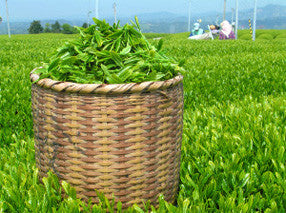
The traditional tea picker's garment is light enough to be comfortable yet full enough to withstand the heat of the sun. It's called a chamusume, or tea daughter.
These baskets and garments are more than just functional—they also carry cultural symbolism. The baskets are often handmade by local artisans and designed to be lightweight but durable enough to handle hours in the fields. The chamusume attire, with its bright patterns and wide sleeves, has become an iconic image of the Japanese tea harvest, appearing in festivals, tourism ads, and even traditional folk songs. Today, while modern equipment is widely available, many small farms still embrace these traditional tools and garments, not only for practicality but also to preserve the heritage and identity of Japanese tea farming.7. There is Tourism for Experiencing Tea Harvesting.
Obubu, as the Japanese green tea is called in the Kyoto dialect, is one of the most expensive teas in Japan, with a cost of about 14,000 yen per kilogram. For over 800 years, farms in the rural Kyoto prefecture have been growing it, and you can help out during harvest season. There are travel agents that can arrange a day visit where you start with a morning tour of the farm and the opportunity to pick your own tea leaves. Staff will show you how best to do it, and you are provided with a traditional wooden basket for your crop. In the afternoon, after lunch, you get to work on processing the leaves by roasting and kneading them to get them ready for a delicious cup of ocha.
This form of tea tourism has grown popular not only among international travelers but also within Japan, as people seek to reconnect with cultural traditions. Some farms even offer multi-day workshops where visitors learn about soil preparation, shading techniques, and the differences between sencha, matcha, and gyokuro processing. Beyond hands-on experience, these tours often end with a guided tea tasting led by the farmers themselves, allowing guests to appreciate the subtle flavor differences that result from seasonal harvests and cultivation methods. In many ways, tea tourism serves as both an educational experience and a preservation effort, helping to pass Japan’s centuries-old tea heritage to new generations of enthusiasts.
8. In the Fall, Workers Begin to Prepare the Farm for Next Year's Harvest.
Autumn follows and is considered the most critical season for farmers. This is the time when Camellia sinensis, the tea plant, grows best, and farmers have hurriedly worked during the late summer and early autumn to enrich the soil and encourage new root growth. The work includes adjusting the soil's pH to the proper levels, deep aeration by mechanical means, and the application of fertilizer to promote strong, healthy growth of the tea bushes.
Green tea trees are pruned during the fall months of October and November. Pruning at this stage ensures that the sprouts of old leaves don't get mixed in and degrade the next year's springtime harvest. Neglecting to prune at the correct time will also be harmful to the plant and result in unhealthy trees.
Autumn preparation often includes careful spacing and canopy shaping of the bushes to guarantee even sunlight and airflow across the field. Farmers may also replace weaker or aging plants during this season so the garden stays vigorous for years to come. The fall work is less visible to outsiders compared to the excitement of spring harvest, yet it is this behind-the-scenes care that sets the stage for the quality and flavor of the next year’s tea. In essence, the sweetness of shincha in May is born from the diligence and foresight of autumn.
9. Green Tea Trees Need Special Care During the Wintertime.
Straw, dry leaves, and bamboo husks are all laid out by the trees to help keep them warm during the cold and snowy months. This acts as fertilizer and helps the soil retain a healthy amount of moisture. The trees, especially young ones, are prone to disease and death during the cold months, so farmers must go out of their way to ensure the trees stay warm and healthy until spring arrives.
In regions like Shizuoka and Kagoshima, where winter can be especially harsh, farmers also rely on windbreaks, protective nets, and mulching techniques to shield the bushes from frost damage. Some use the traditional Chagusaba Method, where companion grasses are grown, cut, and spread around the fields to insulate the soil while enriching it with organic matter. These practices not only protect against winter loss but also subtly enhance the complexity of the tea’s flavor the following spring. Winter care, though unseen by consumers, is one of the most crucial factors in maintaining the resilience and longevity of Japan’s tea gardens. (Read more about the ancient Chagusaba Method, where different plants are used to keep the soil in good shape, which makes the tea taste better.)

10. The Harvests in Japan are Very Different Rrom the Techniques Used in China.
Japan picks certain leaves at different times of the year, while China generally gathers all the leaves at once. China also harvests the buds and stalks, unlike the delicate Japanese tradition of plucking each acceptable leaf individually. After the harvest, Japanese tea leaves are steamed to give them a stronger, richer flavor.
The process of tea leaf harvesting is a complex routine that takes up much of the year. From the first harvest all the way to the last, the farmers in Japan are working tirelessly to produce the highest quality tea they can.
Beyond plucking methods, the post-harvest processing also highlights cultural differences. While Japan relies almost exclusively on steaming to halt oxidation—preserving a grassy, umami-rich freshness—China typically uses pan-firing, which imparts nutty or toasty notes. These contrasting approaches mean that even when the same tea plant is grown, the resulting flavors, aromas, and textures are dramatically different. Japan’s emphasis on uniformity, shading, and precision contrasts with China’s broader spectrum of regional styles, making Japanese teas distinct in both identity and global reputation.
Conclusion
Japanese green tea harvesting is far more than just agriculture—it is a seasonal cycle of patience, precision, and cultural heritage. From the delicate hand-picking of shincha in spring to the careful shading, pruning, and winter protection that sustain the bushes year after year, every step reflects centuries of knowledge passed down through generations. Though Japan produces a relatively small share of the world’s green tea, the craftsmanship and dedication invested into each leaf make it some of the most celebrated and unique tea on the planet. For tea drinkers everywhere, every cup is a taste not only of flavor but also of tradition and devotion.
Do you like my post? If so, please join my Green Tea Lover's Newsletter today. By signing up, you get my e-book, "Green Tea Science: Brewing Technique Book," for free. This e-book is a 15-page PDF containing 12 scientifically proven techniques to make your green tea taste better and healthier.
Get Free Bonus Books

Sign up for free to the Green Tea Club to get advice and exclusive articles about how to choose Japanese Tea, and tips, tricks, and recipes for enjoying Japanese tea.
About the author
Kei Nishida
Author, CEO Dream of Japan
Certification: PMP, BS in Computer Science
Education: Western Washington University
Kei Nishida is a passionate Japanese green tea connoisseur, writer, and the founder and CEO of Japanese Green Tea Co., a Dream of Japan Company.
Driven by a deep desire to share the rich flavors of his homeland, he established the only company that sources premium tea grown in nutrient-rich sugarcane soil—earning multiple Global Tea Champion awards.
Expanding his mission of introducing Japan’s finest to the world, Kei pioneered the launch of the first-ever Sumiyaki charcoal-roasted coffee through Japanese Coffee Co. He also brought the artistry of traditional Japanese craftsmanship to the global market by making katana-style handmade knives—crafted by a renowned katana maker—available outside Japan for the first time through Japanese Knife Co.
Kei’s journey continues as he uncovers and shares Japan’s hidden treasures with the world.
Learn more about Kei


